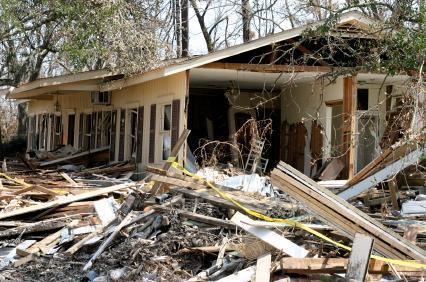 When Hurricane Andrew struck Florida in 1992 it left behind not just an enormous path of devastation, it also pushed the state to enact more stringent building codes to protect against the next big storm.
When Hurricane Andrew struck Florida in 1992 it left behind not just an enormous path of devastation, it also pushed the state to enact more stringent building codes to protect against the next big storm.
According to the Insurance Institute for Business & Home Safety, not all states in the hurricane zone have not followed this approach.
On August 24, 1992 Hurricane Andrew made landfall in South Florida as a Category 5 storm, causing more than $26 billion of insured damage in 2012 dollars. The storm left behind miles of debris that was once housing for 250,000 residents and commercial buildings for more than 80,000 businesses in a region that then was considered to have some of the best storm-resistant building codes in the nation.
“What Andrew made tragically clear was that South Florida’s relatively strong building codes simply were not being enforced,” Julie Rochman, IBHS president and CEO, said in a statement. “After the storm, we saw extensive evidence of both large and small breakdowns in the code enforcement process. Sadly, that poor enforcement needlessly cost families and communities dearly.”
Harsh lessons taught by Andrew spurred Florida’s coastal counties to reevaluate their own building code standards and enforcement mechanisms. As a result, just a few years later, in the mid-1990s, high-wind engineering-based design and construction requirements in the standard building code were adopted in coastal counties.
In 2002, Florida adopted a statewide building code including high-wind provisions. It was accompanied by extensive education and training requirements for all licensed engineers, architects and contractors.
“Hurricane Andrew demonstrated how important good, well-enforced building codes are,” Rochman said. “Some states, like Florida, took necessary steps to protect citizens by adopting a good statewide building code. It is important to remember that codes are literally a minimum building standard. Everyone, everywhere, deserves to live in a home that meets basic, minimum safety standards. Unfortunately, several states – including some along the hurricane-exposed Gulf and Atlantic Coasts – still have not adopted statewide minimum building standards.”
Multiple studies have been conducted which demonstrate the positive impact of modern, engineering- based building codes on the performance of residential homes during a severe high-wind event.
An IBHS study conducted following Hurricane Charley (2004); it found that adoption and enforcement of modern building codes reduced the severity of residential property claims by 42 percent and the number of residential property claims by 60 percent.
A study commissioned by the National Association of Mutual Insurance Companies found that if states in hurricane-prone areas had begun adopting and enforcing modern building codes in 1988, wind-related property losses could have been reduced by nearly $13 billion dollars.
Earlier this year, IBHS analyzed building code requirements and enforcement policies in the 18 hurricane-prone states along the Gulf and Atlantic coastlines from Texas to Maine.
This first-of-its-kind report, Rating the States: An Assessment of Residential Building Code and Enforcement Systems for Life Safety and Property Protection in Hurricane-Prone Regions, found that codes in many coastal states still do not provide a uniform level of protection. The lack of uniformity results in real consequences for people in harm’s way.
“With $10 trillion in existing property exposed along the vulnerable Gulf and Atlantic Coasts, states must take a proactive approach to disaster preparedness,” Rochman said, “That obviously starts with adoption and enforcement of strong statewide building codes.”











